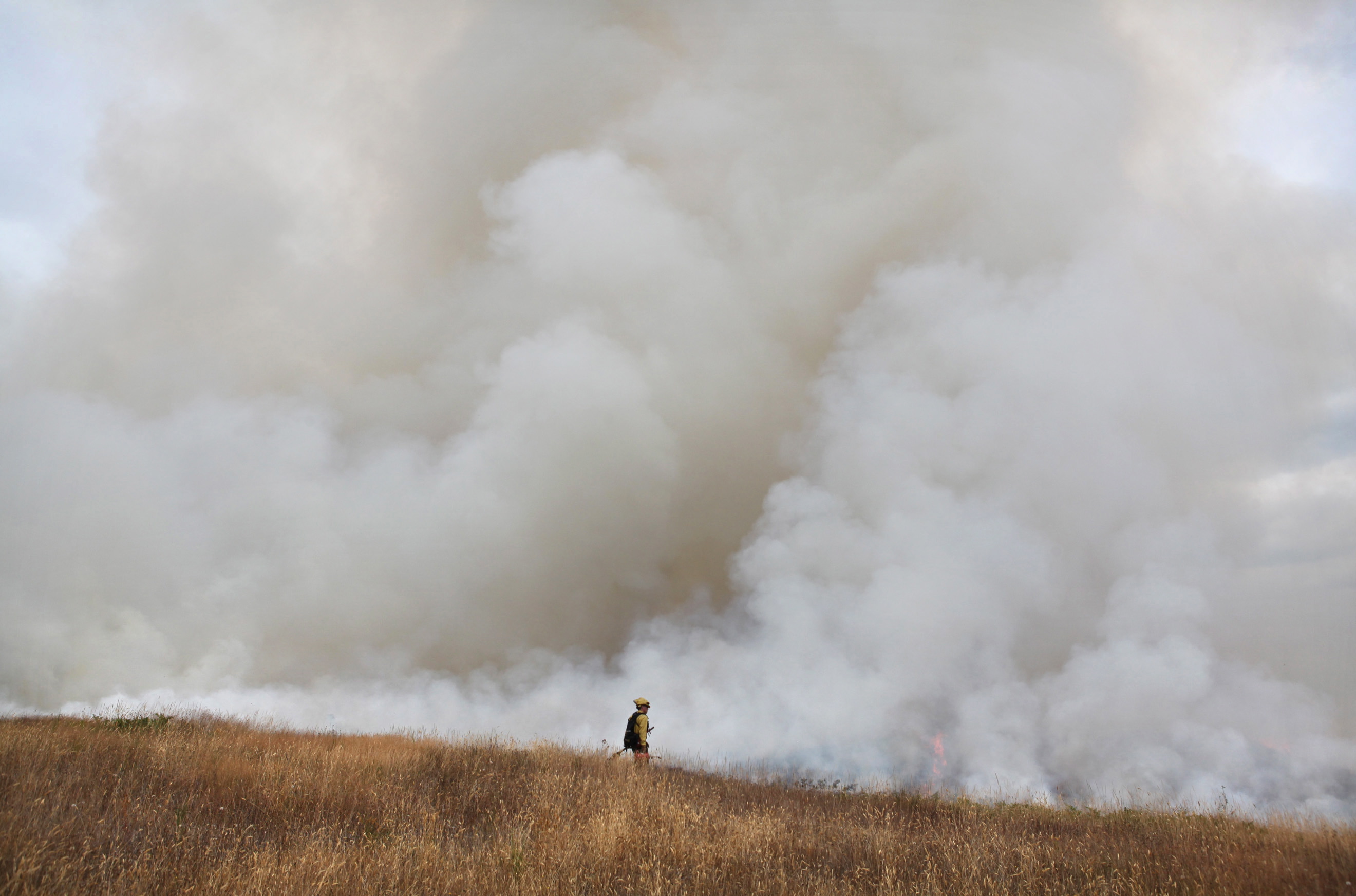OLYMPIA — Fire raced across a 60-acre patch of Thurston County’s Glacial Heritage Preserve on Wednesday afternoon in 75 minutes, leaving behind a charred and smoky prairie landscape.
The fire was intentionally set as part of a South Sound prairie restoration program that has used prescribed burns, which are the opposite of a wildfire, for more than 10 years.
“In a wildfire, the fire is managing us,” said Bob Wilken, a Center for Natural Lands Management employee who served as the burn boss, overseeing a crew of about two dozen firefighters. “In a prescribed burn, we manage the fire.”
The Wednesday fire, which was well-managed and well-behaved, is one of about 17 prescribed burns totaling 300 acres on public lands in South Sound slated for ignition this late summer and early fall, said Mason McKinley, a trained firefighter and project manager for the Center of Lands Management. The center is a California-based nonprofit group that took over The Nature Conservancy’s South Sound prairie-protection and -recovery projects in June 2011.
The primary goal of these fires is to knock back the invasive plants that, if left to their own devices, overrun the native prairie grasses and flowers that play host to several endangered prairie species, including a butterfly called the Taylor’s checkerspot.
This black, reddish-orange and cream-colored insect once occupied some 70 sites scattered from Vancouver Island in British Columbia to the Willamette Valley in Oregon. Today, the only self-sustaining population is found at — of all places — the artillery impact zone at Joint Base Lewis-McChord.
However, conservation groups, the state Department of Fish and Wildlife, Lewis-McChord, the Oregon Zoo, the state Department of Corrections and other partners have been working for several years to breed and reintroduce the medium-sized butterfly to other prairie sites in South Sound.
They don’t have a lot of prairie habitat to work with; less than 3 percent of what existed prior to decades of development and invasion of nonnative species, including Scotch broom, moss and grasses.
“You would expect the Taylor’s checkerspot to blink out at individual places over the years,” Cheryl Finbel, the center’s rare-species biologist, noted. “But they used to be able to rely on a greater landscape for their existence.”
As flames crackled waist-high across the prairie Wednesday, Finbel had her sights set on a 5-acre section of the freshly scorched ground where she and her helpers will plant some 30,000 seedlings of paintbrush, blue-eyed Mary and other native species this winter. They will serve as host plants for Taylor’s checkerspot caterpillars that will be introduced to the site in late winter or early spring.
It will be a repeat performance of what happened last year and earlier this year on the prairie right next to Wednesday’s burn. About 1,000 Taylor’s checkerspot butterflies were released there last March.
The cool, wet spring led to a high mortality rate for the sensitive species.
“But butterflies were seen sticking here and flying around,” said Hannah Anderson, rare-species program manager for the center. “It usually takes several years of reintroduction to establish a new population.”
This time of year, the butterflies are in their caterpillar burrowing stage to escape the heat, so the nearby fire and smoke shouldn’t have bothered them. They also hibernate in the winter to escape the cold.
Butterflies are a type of boom-and-bust species, but in recent decades the Taylor’s checkerspot has been more of a bust — enough to get the attention of the U.S. Fish and Wildlife Service, which is expected to decide fairly soon whether the species is worthy of protection under the federal Endangered Species Act.
Whatever Fish and Wildlife decides, Finbel and her colleagues expect the prairie-restoration work on behalf of the butterfly will continue to help keep the butterfly from going extinct.



